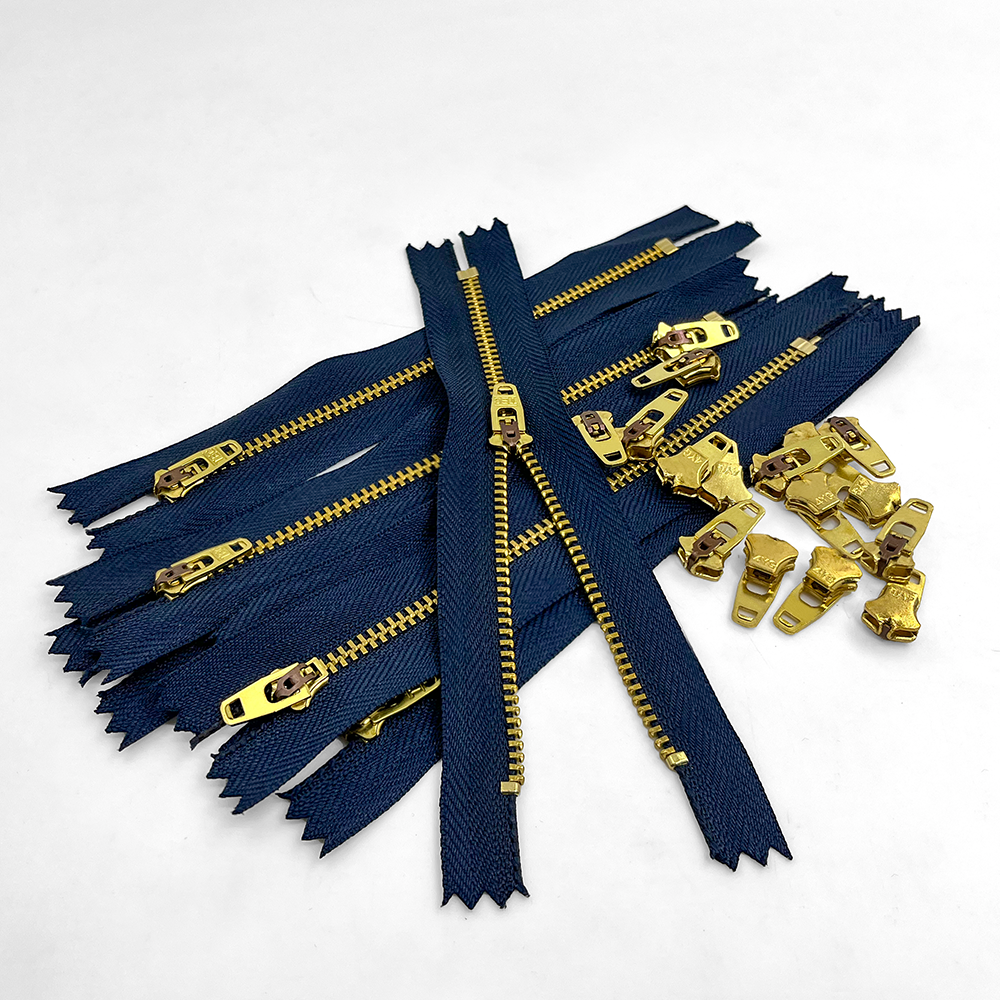In the world of fashion and craftsmanship, the antique brass zipper has evolved beyond a functional accessory—it’s now a design statement. With its classic, muted golden tone, this vintage-inspired hardware is widely used in leather goods, jeans, workwear, custom bags, and even home textiles.

But many users overlook one important detail:
Antique brass zippers need regular maintenance. Without proper care, they can easily become stiff, oxidized, discolored, or even misaligned—compromising both function and aesthetics.
This complete guide will show you how to clean, protect, and maintain your antique brass zippers with ease. Whether you’re a designer, crafter, or quality-conscious consumer, these tips are worth bookmarking.
1. Why Antique Brass Zippers Need Special Care
Antique brass is typically an alloy of copper and zinc, finished with oxidation or brushed plating to give it a weathered, matte look. This vintage effect adds unique character—but also makes it more vulnerable to:
- Moisture, dust, and oil buildup;
- Oxidation over time;
- Sensitivity to chemicals or sweat.
In short: the charm comes with responsibility.
Good care = better longevity + lasting beauty.
2. Common Problems and What Causes Them
| Issue | Cause | Risk |
|---|---|---|
| Stiff or hard-to-pull zipper | Dust, lack of lubrication, worn teeth | Broken slider or damage to fabric |
| Dull or darkened surface | Oxidation, sweat, air exposure | Aesthetic downgrade |
| Green tarnish or white spots | Humidity, poor storage | Corrosion, unpleasant smell |
| Loose or misaligned teeth | Forceful pulling, aging | Zipper won’t close properly |
3. 5 Easy Ways to Maintain Antique Brass Zippers
1️⃣ Dry Cleaning: Remove Dust Regularly
- Use a soft, dry cotton or microfiber cloth to wipe along the zipper teeth.
- For hard-to-reach spots, use a clean soft brush or handheld vacuum.
- Recommended frequency: weekly for daily-use items; always before long-term storage.
💡 Pro tip: Never use a wet cloth—moisture speeds up oxidation.
2️⃣ Dry Storage: Moisture Is the Enemy
- Store zipper items in a cool, dry place, away from direct sunlight or humidity.
- Use silica gel packs or dehumidifiers in storage boxes.
- Leather goods benefit from mothballs or mold-prevention sheets for added protection.
📦 Bonus: Quality zipper brands often include silica gel packaging—look for that as a mark of professionalism.
3️⃣ Lubricate When Needed: Restore Smooth Glide
- If the zipper feels sticky or stiff, apply zipper lubricant or a substitute like wax, soap, or a wax crayon.
- How to apply:
- Lightly coat both sides of the zipper teeth;
- Pull the zipper back and forth to distribute;
- Wipe off excess to avoid dust attraction.
🧰 Tools you might need: Zipper wax, soft brush, tweezers (especially for makers or repair shops).
4️⃣ Avoid Chemical Contact: Protect the Surface
- Avoid direct contact with perfumes, skin lotions, detergents, or sweat.
- Always close the zipper and turn garments inside out before washing.
- Use mild detergents, and air-dry thoroughly.
💡 Leather goods? Use leather conditioner and gently buff the zipper during maintenance.
5️⃣ DIY Oxidation Treatment: Bring Back the Shine
For light discoloration or minor tarnish, try this simple homemade formula:
Natural Polish Paste:
- Mix: 1 tsp baking soda + a few drops of white vinegar + warm water;
- Use a soft toothbrush to gently scrub;
- Let sit for 2 minutes, then wipe clean with a damp cloth;
- Dry thoroughly and re-lubricate.
🧪 For makers: metal polishes like Brasso work well—but always test on a small area first, as they can remove antique finishes.
4. 4 Common Mistakes to Avoid
| Mistake | Consequence |
|---|---|
| Soaking zippers in water | Triggers corrosion and darkens metal |
| Forcing stuck zippers | Misaligns teeth or breaks sliders |
| Using harsh chemical cleaners | Damages plating or removes finish |
| Long-term neglect without cleaning | Leads to rust, stains, or mildew |
5. Final Thoughts: The Beauty of Brass Grows Over Time—with Care
An antique brass zipper is more than just a fastener. It’s a functional detail with soul, telling a story through its patina and wear. But to preserve its look and function, consistent maintenance is essential.
With just a few simple practices, you can keep your zippers working smoothly and looking better with age.

